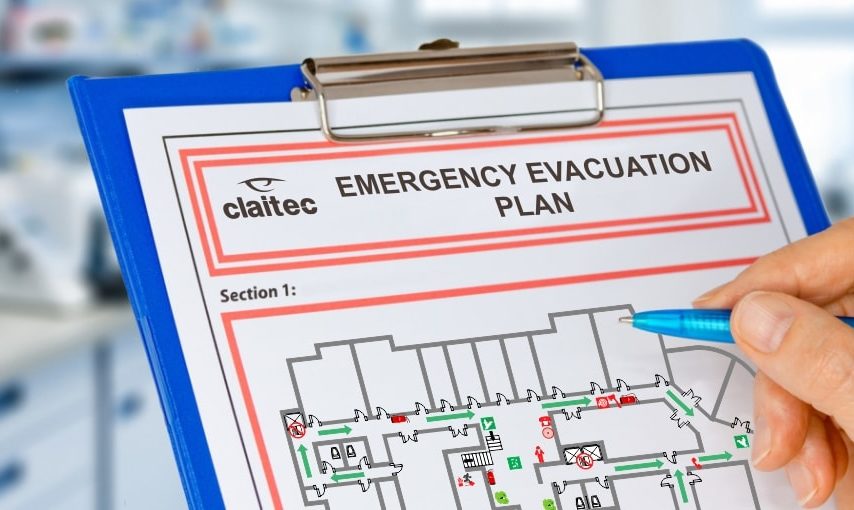A good emergency evacuation plan would be any means of security against disasters, be it man-made or natural. No one can predict when a crisis will strike a business. A flexible and broad evacuation plan is the most effective means to save the lives of the people working for you when there is an imminent threat and help you revert to normal functioning. Knowing basic first aid is very important in such scenarios as first aid can help save lives.
Evacuation Planning: Risks Involved
You prioritise protecting the people working under you as well as the financial prospects of the company. So when disasters wreak havoc, it is necessary to revert to normal functioning as soon as possible.
An effective emergency evacuation plan can safeguard the finances of the company. Various regulations need businesses to have planned for emergencies to secure the well-being of people present in the facility.
Sure, the preparation is time-eating and costly to maintain, but doing it can go a long way.
Better Emergency Evacuation Planning
It does not matter how big the business is, the following will help you to prepare your company for orderly and calm emergency evacuations.
Create An Overall Action Plan
Implementation will only be successful when there is an effective plan.
This plan will include all the actions that will be taken prior, during, and post an emergency. It starts from knowing the triggering things that lead to the procedures of restoration and evacuation. This plan will help you to reduce casualties and damage to infrastructure.
Coordinate With Emergency Services
Stay in touch with the medical, law enforcement, and fire services whilst planning. Reach out to them well before the planning. They will also help you in developing plans and strategies that cater to emergencies.
They are the experts who know how to deal with situations like these and will provide you with the ways and means to conduct your evaluations.
There are instances where organisations exist in multi-story buildings or parks. If so, pool in resources with the adjacent companies to share and divide duties when needed. Smooth coordination will also mean that you will not sabotage the evacuation protocol of another firm.
Assigning Routes And Assembly Points
Devising the safest routes for evacuating every section of the facility plays a vital role in emergency evacuation procedures.
Find out the fastest means that will help each and everyone to navigate out of danger. Do not go to places that will expose your employees to risk.
Identify the places where you can assemble your colleagues once they are safe. Conduct musters to determine the safe people, the ones who are still in danger, and the ones that need medical care.
In case of a fire evacuation procedure, do not let anyone use elevators, and make sure to close the doors behind you.
Put up posters with diagrams that show these routes and the assembly points and are kept clear of obstructions at all times. Use paint that glows in the dark that helps during a power outage.
Command Chain
Assigning roles and duties should be an integral part of your emergency evacuation plan so that your employees know what they are supposed to do when there is an emergency.
Most infrastructures need handling of shutdowns. An abrupt shutdown of the equipment can cause data loss. People assigned with duties must complete the requisites before evacuating.
Supervise and ensure that people are swept off all the floors. They will also be the ones who will take the roll calls to deem the personnel safe. They will keep in touch with emergency services.
Create A System For Managing The Visitors
There needs to be a way to account for all visitors and personnel after an evacuation. Designate evacuation wardens in the assembly area to take a headcount of all visitors and personnel in the case of evacuation to make sure everyone is safely out.
The Right Equipment In Hand
Make sure you have emergency equipment stocked up and ready for use. Place protective equipment like safety glasses, face shields, fire extinguishers, respirators, hard hats, emergency lighting, escape ladders, megaphones, suits, and chemical hoods at different locations and mark them with neon paint in case of a power outage.
Keep It Simple
Even a minute crisis can make your workers concerned. Maintain compact evacuation procedures. Situations might come when the staff that is less trained have to carry out operations. It may be due to injuries sustained by the trained ones. They, therefore, need simple processes that they can comprehend and follow.
You cannot expect your personnel to know about every little detail that comes in handy during an emergency. Hence, dividing duties among the personnel will make it easy to complete the maximum number of objectives. Clearly define the essential tasks in the emergency evacuation plan in brief.
Some of the necessary objectives include:
- Sealing down the vital equipment
- Contact the emergency services
- Mustering the employees at designated assembly points
- Using the correct routes for evacuation to the assembly points
- Maintaining the record of the personnel and providing first aid till further help arrives
Protecting And Sheltering The Personnel
The emergency evacuation plans that you devise should protect the employees, visitors, and contractors in or near the facility. It should also cater to the needs of the services that will assist you during the emergency.
Include means in your evacuation plan which will help individuals with disabilities, old age, or those with a chronic illness like asthma or injuries that hamper mobility.
Conduct Exercises
The freshers who join your firm must learn the emergency protocols that the facility follows at the time of the emergency evacuation procedure. Conduct exercises twice a year to provide hands-on experience to the personnel. Many workplaces have climate-specific or particular hazards endemic to a given facility. Consider adding them to the protocol.
It will help the personnel to get acquainted with the evacuation routes. With practice, the personnel hone their skills and get better at it. Consider the following questions and respond accordingly:
- Have the threats that the organisation has faced changed in recent years?
- Is there anything about your work environment that has changed and needs supervision?
- Are the places that you have decided to take a roll-call safe?
- Are the emergency tools and other equipment readily available?
Consider an example of a fire evacuation procedure, for which you will also need to activate a fire alarm beforehand. First of all, every workplace is different. So an emergency evacuation plan that is efficient for one workplace will not work for another. The hazards in your workplace and the hurdles that accompany them are rare in your workplace.
Also, for the places where the setup and work environment change frequently, there should be regular updates to the emergency evacuation procedures.
Efficient Evacuation Is The Best Tool
You can develop a powerful and effective emergency evacuation plan when you follow the points mentioned above.
Do not just rely on online tools. Human expertise and knowledge are also necessary. In addition to these, the local emergency service providers are also there to provide you with helpful advice and guide you in drastic times. The first and foremost duty of management is to assist injured personnel and notify emergency responders of the medical emergency.













